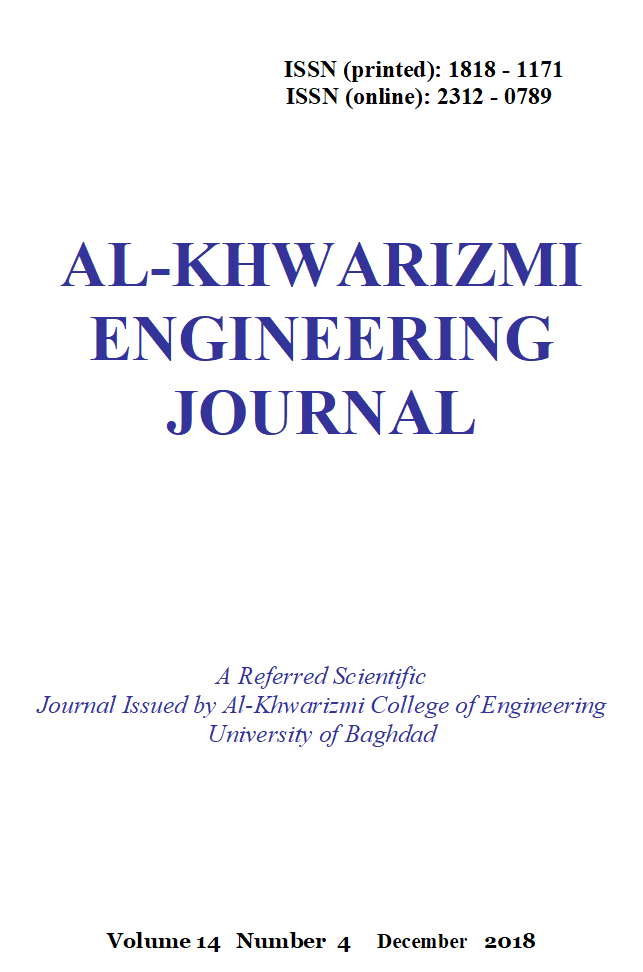Best Level of Parameters for a Critical Buckling Load for Circular Thin- Walled Structure Subjected to Bending
DOI:
https://doi.org/10.22153/kej.2017.07.003Abstract
Circular thin walled structures have wide range of applications. This type of structure is generally exposed to different types of loads, but one of the most important types is a buckling. In this work, the phenomena of buckling was studied by using finite element analysis. The circular thin walled structure in this study is constructed from; cylindrical thin shell strengthen by longitudinal stringers, subjected to pure bending in one plane. In addition, Taguchi method was used to identify the optimum combination set of parameters for enhancement of the critical buckling load value, as well as to investigate the most effective parameter. The parameters that have been analyzed were; cylinder shell thickness, shape of stiffeners section and the number of stiffeners. Furthermore, to verify the contribution of parameters on buckling response, the analysis of variance technique (ANOVA) method was implemented, which gave the contribution weight as percentages. The analysis of results by these two methods showed that the more effective parameter on the critical buckling load was the thickness of cylinder’s shell and the lowest effective was the number of stiffeners The values of parameters that gave the best critical buckling load combination were: 1) the ratio of cylinder’s diameter to thickness of its shell was 133, 2) the ratio of the depth to thickness of stiffeners was1.6, and 3) the number of stiffeners was 12.
Downloads
Downloads
Published
Issue
Section
License
Copyright: Open Access authors retain the copyrights of their papers, and all open access articles are distributed under the terms of the Creative Commons Attribution License, which permits unrestricted use, distribution, and reproduction in any medium, provided that the original work is properly cited. The use of general descriptive names, trade names, trademarks, and so forth in this publication, even if not specifically identified, does not imply that these names are not protected by the relevant laws and regulations. While the advice and information in this journal are believed to be true and accurate on the date of its going to press, neither the authors, the editors, nor the publisher can accept any legal responsibility for any errors or omissions that may be made. The publisher makes no warranty, express or implied, with respect to the material contained herein.
















